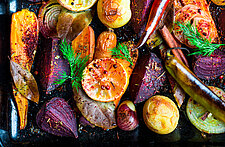By: Junior Merino, The Liquid Chef
Tequila has a complex history dating back hundreds of years. The natives of that region were already drinking an agave-based beverage known as pulque. With the arrival of the Spaniards also came modern fermenting and distillation processes that came to be known as Vino Mezcal. As time passed this region came to be known as Tequila which means “work place” or “stone that cuts” probably because of its volcanic floors. This unique spirit has always been a source of Mexican pride, as a product that defines and celebrates the unique culture of Mexico.
Making premium tequila is an art and also nature’s gift as it takes eight to 13 years for one plant to fully mature. The process of crafting tequila is formidable and the quality-control restrictions imposed by Mexican Law (Consejo Regulador del Tequila) are rigorous. In fact, the primary ingredient of tequila can only be derived from one species of agave—the Tequilana Weber Blue Agave. This special plant grows primarily in the State of Jalisco, but also in four other states allowed in the world by the Consejo Regulador del Tequila. They are Guanajuato, Tamaulipas, Michoacan and Nayarit. These regions are so unique that they have each been granted a denomination of origin.
Tequila is either made from 100% agave or it is a mixto—a blend of agave with other additives like sugar-based syrups or artificial flavors. One should look for tequila made with 100% agave for its premium quality, taste and tradition, without any artificial additives. Mixto on the other hand is 51% agave and 49% of any other type of alcohol, usually rum, or neutral spirit and is colored with carmel to mimic the aging process. The only distinction on a bottle of tequila between 100% and mixto is that one will say Tequila 100% de Agave and the mixto will just say Tequila.
As described above, workers must stop the plant from flowering and cultivate instead the plant's inner core, or piña. After harvesting the pinas, they are carefully relieved of their leaves by jimadores, trained for generations in the art of agave harvesting and then are steamed in giant ovens for 72 hours (less time if pressure cookers are used), eventually softening to the texture.
The next step is extracting the aguamiel, the base for the tequila. Either steel rollers, a giant stone wheel, or a crushing machine, is used to crush the piñas, yielding the juice, which is then either bottled to become agave nectar or combined with water and left to ferment naturally. Each agave plant has natural yeasts present, aiding fermentation however there are some distilleries that aide the process along by adding yeasts or other sugars.
After three to six days of fermentation, the resulting liquid must be filtered and is then sent to copper or stainless steel alambiques, or stills. Double distillation eventually yields a very strong liquid of about 100 to 120 proof. To cut this clear, fiery spirit, distilled water is added, lowering the proof to a less-lethal 76 to 90 proof.
Here the process to distinguish various types of tequila begins. Tequila blanco is bottled immediately or aged up to 59 days. Longer aging yields the reposado, which is aged in wooden barrels for three to 12 months. Finally, añejo is aged from one to four years to create a smooth, fine spirit. Generally, after four years of aging, it is rare to find older tequilas, which are called extra añejo.
Check out last month's Monthly Mixology with Junior Merino HERE




